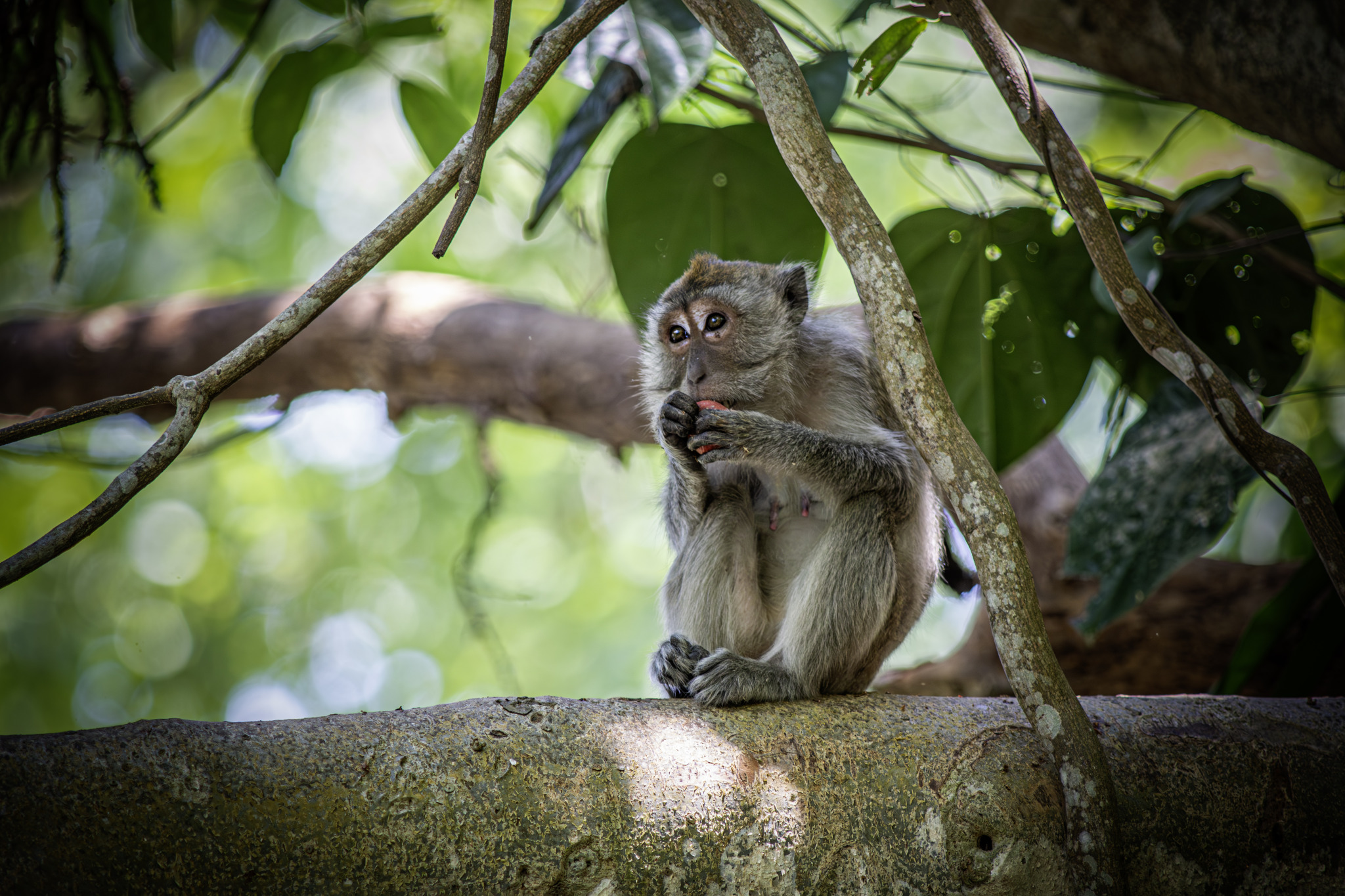Crab-Eating Macaque (Macaca fascicularis)
The Crab-Eating Macaque, also known as the Long-Tailed Macaque, is a highly adaptable primate native to Southeast Asia. Despite its name, crabs are not a major part of its diet, but the species is known for its opportunistic and omnivorous feeding habits. These macaques play an important role in their ecosystems, but their interactions with humans often lead to conflict.
Physical Description
- Size:
- Males: 40–65 cm (16–25 inches) in body length; weigh 5–9 kg (11–20 lbs).
- Females: 37–50 cm (14–20 inches); weigh 3–6 kg (6.5–13 lbs).
- Tail:
- Long and often exceeds the body length, used for balance and communication.
- Fur:
- Greyish-brown or golden-brown fur with a lighter underside.
- Face:
- Pinkish skin with expressive facial features and large eyes.
- Distinctive Feature:
- Adult males have larger canines compared to females, often used in displays of dominance.
Habitat
- Found across Southeast Asia, including:
- Thailand, Indonesia, the Philippines, Malaysia, and Cambodia.
- Habitat Range:
- Coastal mangroves, rainforests, urban areas, and agricultural lands.
- Extremely adaptable, thriving in both wild and human-modified environments.
Behavior
- Social Structure:
- Live in troops of 10–100 individuals, led by a dominant male.
- Hierarchies exist among both males and females.
- Communication:
- Use vocalizations, facial expressions, and body postures to communicate.
- Aggression and submission are often displayed through open-mouth gestures and grooming.
- Daily Activity:
- Diurnal (active during the day), spending time foraging, grooming, and resting.
Diet
- Omnivorous and Opportunistic:
- Fruits, seeds, leaves, insects, and small animals.
- Known to raid crops and scavenge human food in urban areas.
- Occasionally eat crabs and shellfish, especially in coastal areas.
- Skilled at extracting food, such as cracking open hard shells or scavenging garbage.
Reproduction
- Mating System:
- Polygynandrous (both males and females mate with multiple partners).
- Dominant males have priority access to females in estrus.
- Gestation:
- Lasts about 5.5 months.
- Offspring:
- Typically one infant per birth.
- Infants are dependent on their mothers for 6–12 months.
- Females remain in their natal groups, while males typically leave upon maturity.
Ecological Role
- Seed Dispersal:
- Contribute to forest regeneration by spreading seeds from the fruits they eat.
- Predator and Prey:
- Prey on small animals while serving as prey for large predators like pythons and eagles.
Human Interactions
- Conflict:
- Frequently come into conflict with humans by raiding crops, stealing food, and damaging property.
- Tourism:
- Popular in wildlife tourism but often fed by humans, leading to dependency and aggression.
- Biomedical Research:
- Widely used in medical studies, especially for neuroscience and infectious disease research, due to their genetic similarity to humans.
Conservation Status
- IUCN Red List: Least Concern, but populations face pressures in some regions due to habitat loss, hunting, and capture for the pet trade.
- Threats:
- Deforestation and urban expansion.
- Illegal wildlife trade and exploitation for research.
Interesting Facts
- Swimming Skills:
- Excellent swimmers, often observed diving to forage for food in mangroves and rivers.
- Tool Use:
- Some populations have been observed using tools, such as rocks to crack open shells.
- Urban Adaptation:
- Thrives in cities, learning to interact with humans to secure food.
Summary
The Crab-Eating Macaque (Macaca fascicularis) is an intelligent and resourceful primate that thrives in diverse environments. While its adaptability allows it to coexist with humans, this often leads to conflicts that require careful management. Protecting natural habitats and minimizing human-wildlife interactions are key to preserving this species’ role in its ecosystem.
Views: 291
Subscribe to the newsletter:
